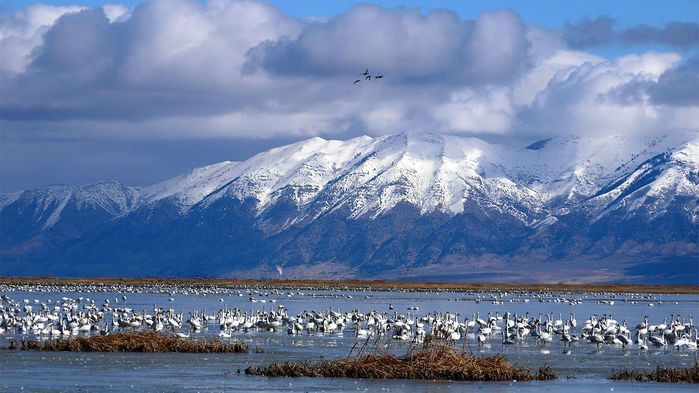Utah's Great Salt Lake Has Lost Half Its Water: Study

It is long known that the world’s water supply is fast running out. In our bid to conserve water, we tend to focus our energy and efforts toward freshwater bodies. But a study has now confirmed that the world’s saltwater lakes are drying up and scientists are blaming humans.
The study, which used more than 170 years of water records and comparative data of how much water flows in and out of the lake, showed that consumption of freshwater is the reason for the shrinking of Utah’s Great Salt Lake and other saltwater lakes around the world.
Recent measurements from the lake show that it is 3.6 meters below its 1847 level and just half its original volume. It reached the record lowest level in 2016. Earlier, climate change was thought to be the culprit, and researchers attributed this shrinking to wet and dry cycles related to changes in weather.
In the study published in Nature Geoscience, lead author Wayne Wurtsbaugh and his colleagues said they recreated the climate around the Great Salt Lake for 170 years, based on historical precipitation, stream level records, and tree ring data.
“The records showed that precipitation and temperature patterns had hardly fluctuated during the period, meaning that the amount of water flowing into the lake from nearby streams is likely the same today as it was in 1847,” Wurtsbaugh said.
After this step, the team studied the water balance of the lake by studying the inflow and outflow from the lake. The amount of water flowing into the lake from different sources like rivers and rain were compared to the water that evaporated out of it. If the lake stayed the same size, the water in and out should balance out. The findings revealed that it didn’t match up, pointing to a change in size.
The team found that the growing population of humans around the lake was the major reason for the decline in water level. The streams feeding the lake are constantly diverted for human use. According to the study, 3.3 trillion liters of water are diverted away from the lake annually.
Climate change, which has been hotly debated in the recent past, was found to have very less impact. Much to the surprise of science nuts, climate stayed relatively stable according to the team. According to a report by Science Mag, “The team concluded that humans are triggering the decline by consuming streamwater before it replenishes the lake.”
“Although some of that water returns to the lake (for example, by soaking into the ground after irrigation), Wurtsbaugh says the new calculations show that the overall amount fell 39 percent from 2003 to 2012. This, in addition to long-term stream records, suggests that climate change isn’t the culprit,” the report added.
This is an important issue because, according to the report, a dry lakebed exposes salts and sediments that can then go airborne after drying out. These particles can enter your body through your nose causing respiratory and cardiovascular problems, says Maura Hahnenberger, an atmospheric scientist at Salt Lake Community College.
She added that there have been such lakebed duststorms in the past but if Utah Lake dries out, it will be very close to people and have a much higher impact.
Such lakes also provide habitats for migrating birds, many of which bulk up on brine shrimp before and during their long journeys, the report added.
According to Wurtsbaugh, we need to strike a balance between human consumption and conservation. In the study, the team said that the inflows to the Great Salt Lake will need to increase 24 to 29 percent to maintain its health and stability. With the population of Utah set to double by 2050, long-term conservation and planning is crucial.
© Copyright IBTimes 2025. All rights reserved.





















